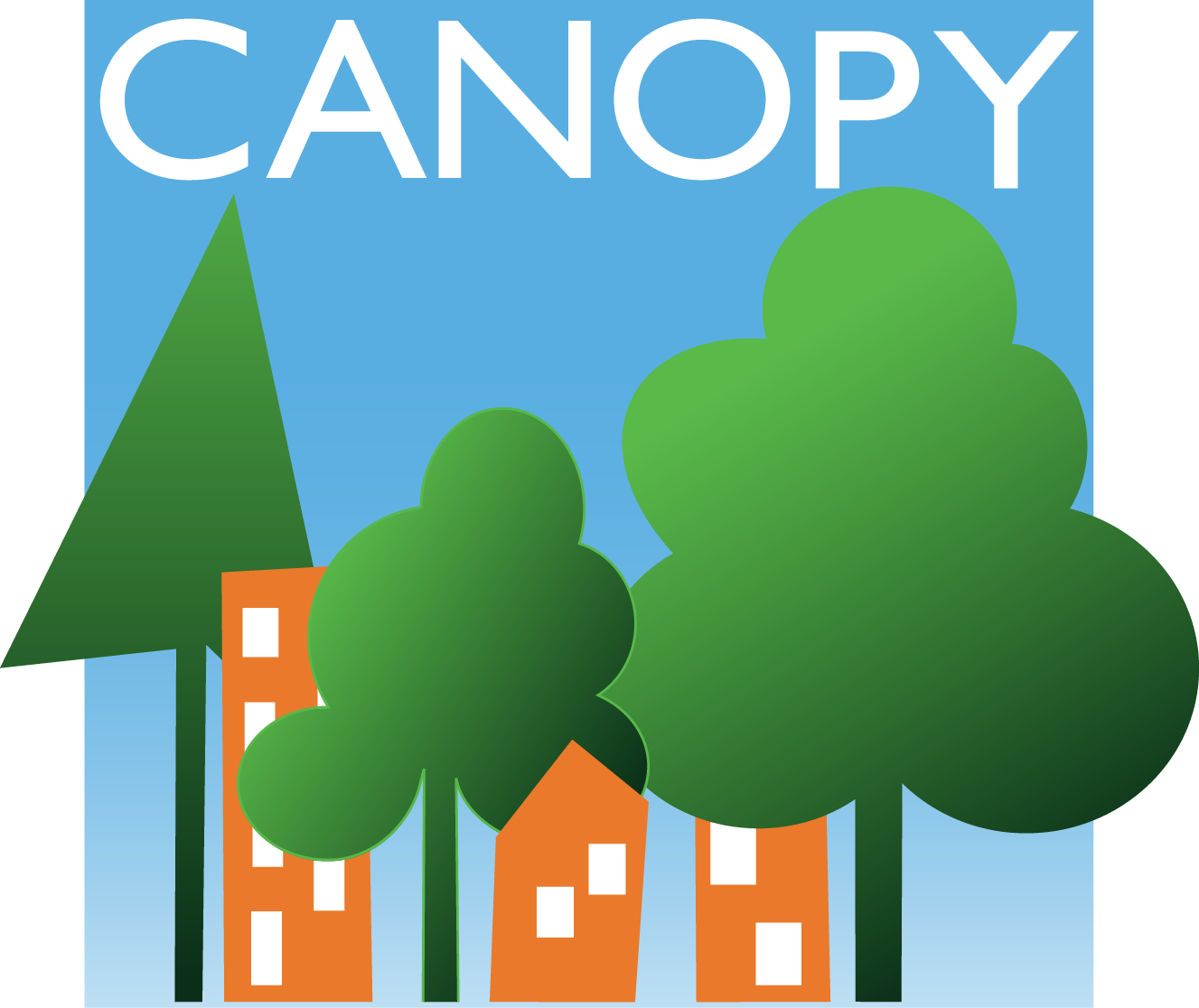
Canopy
2019 – $15,000 Tree Inventory Project in East Palo Alto
For over two decades, Canopy has been the leading voice for trees in San Francisco Midpeninsula communities, using trees as change agents to mitigate climate change, advance environmental justice, and transform neighborhoods. Each year Canopy engages thousands of local families, volunteers, and students in planting trees and stewardship at parks, school campuses, and neighborhoods. Canopy carefully selects the “right tree for the right place” to ensure long-lived trees that deliver maximum community benefit. The trees provide shade for streets and buildings, reduce urban heat island effect, store and sequester carbon long-term, beautify neighborhoods, and support local ecosystem functions and a diverse web of native wildlife.
Canopy also equips hundreds of K-12th grade students with hands-on environmental science lessons and urban forestry internships, sparking their curiosity about nature and empowering youth to make a difference in their community. The growing scale and complexity of the environmental issues we face, from climate change to pollution to loss of biological diversity, demands an environmentally literate public that is inspired to act as stewards of the earth and apply practical environmental know-how to support an improved quality of life. That is why Canopy starts with youth environmental education as an entry point to develop the next generation of environmental stewards who will contribute to the growth of urban tree canopy and our future of climate resiliency.
Creating a healthy urban forest takes much more than planting trees. Without smart policies and long-term investment, urban trees and green spaces are vulnerable to drought, development, poor planning, and inadequate care. Canopy has successfully made the case for investing in community trees, with far-reaching impact in local communities and beyond.
Founded in 1996, Canopy was created to support the City of Palo Alto’s urban forestry programs and educate residents about the value of trees and their care. In 2006, Canopy began partnering with the community of East Palo Alto to address environmental equity and public health issues in their city, particularly those associated with unequal canopy cover and lack of access to urban nature.
In 2017, Canopy further expanded to meet growing demand for programs in Belle Haven, Mountain View, North Fair Oaks, and Redwood City. Today, Canopy is a regional and sector-leading organization with active programs in five Midpeninsula cities and counting.
Canopy’s mission to grow urban tree canopy in Midpeninsula communities is accomplished through three interconnected core programs:
Trees: Canopy takes direct action to grow tree canopy cover and enhance green spaces by engaging volunteers and partners to plant hundreds of trees and steward thousands of trees every year in their communities.
Education: Through K-12 programs, High School Internships, and Adult Education programs, Canopy leads communities to the knowledge, attitude, skills, and actions that support the urban forest.
Advocacy: Through advocacy at various jurisdiction levels, Canopy steps up to help partners adopt tree-friendly policies and practices, and ensure adequate funding for tree programs in the Midpeninsula.
By growing local urban forests, Canopy creates urban environments that restore community health and invigorate natural ecosystems. And by empowering youth and residents, Canopy plants the seeds of community connection and long-lasting change.
Canopy’s The Great Oak Count Project Report
The Great Oak Count is a citizen science survey of native oaks in Palo Alto using state-of-the-art online digital mapping technology. Twenty years ago, Canopy engaged volunteers in the “Oakwell Survey” of 9,000 native oaks on public and private property in Palo Alto, the only known comprehensive oak dataset. The city was losing its iconic mature oaks at an alarming rate and the City Council had just adopted its first tree protection ordinance. In 2017, Canopy launched The Great Oak Count to engage volunteers in a new survey of the native oaks to create an updated geolocated inventory and map.
Native oaks play a unique role in improving critical urban functions, and as the state of our environment becomes more precarious these trees will enhance the capacity of cities to adapt to a changing climate.
The Great Oak Count is the first program that implements San Francisco Estuary Institute’s Landscape Resilience and Re-Oaking principles. The Great Oak Count fills a key gap in urban forestry research by providing information about tree population dynamics on private lands, which comprise the majority of urban forest canopy. The Great Oak Count data is unique, and can help researchers understand regional urban oak population changes, assess the effectiveness of tree protection ordinances, and make informed resource management decisions.
Funding from the Seed Fund helped Canopy assemble a nimble team of Palo Alto volunteers to survey and map the native oaks throughout the city. Canopy’s project lead is an oak expert and has guided the volunteer team to survey over 2,000 native oaks in nine neighborhoods. The project lead is responsible for recruiting and conducting training sessions with volunteers, organizing volunteer teams to survey, and tracking progress with the Tree Plotter mapping tool. Funding from the Seed Fund also helped Canopy to create materials to promote the survey project, and purchase tablets and data plans to bring the training into the field.





